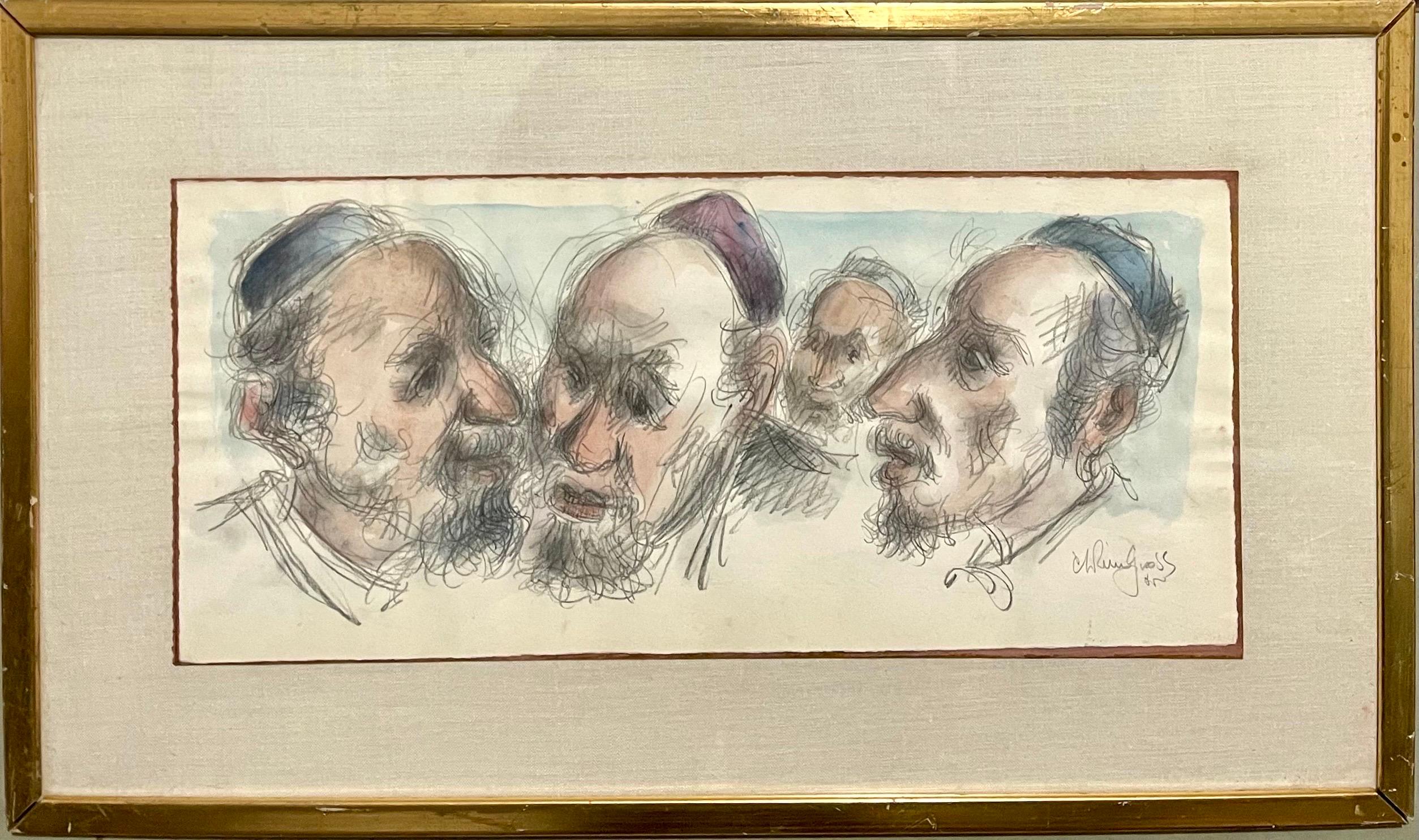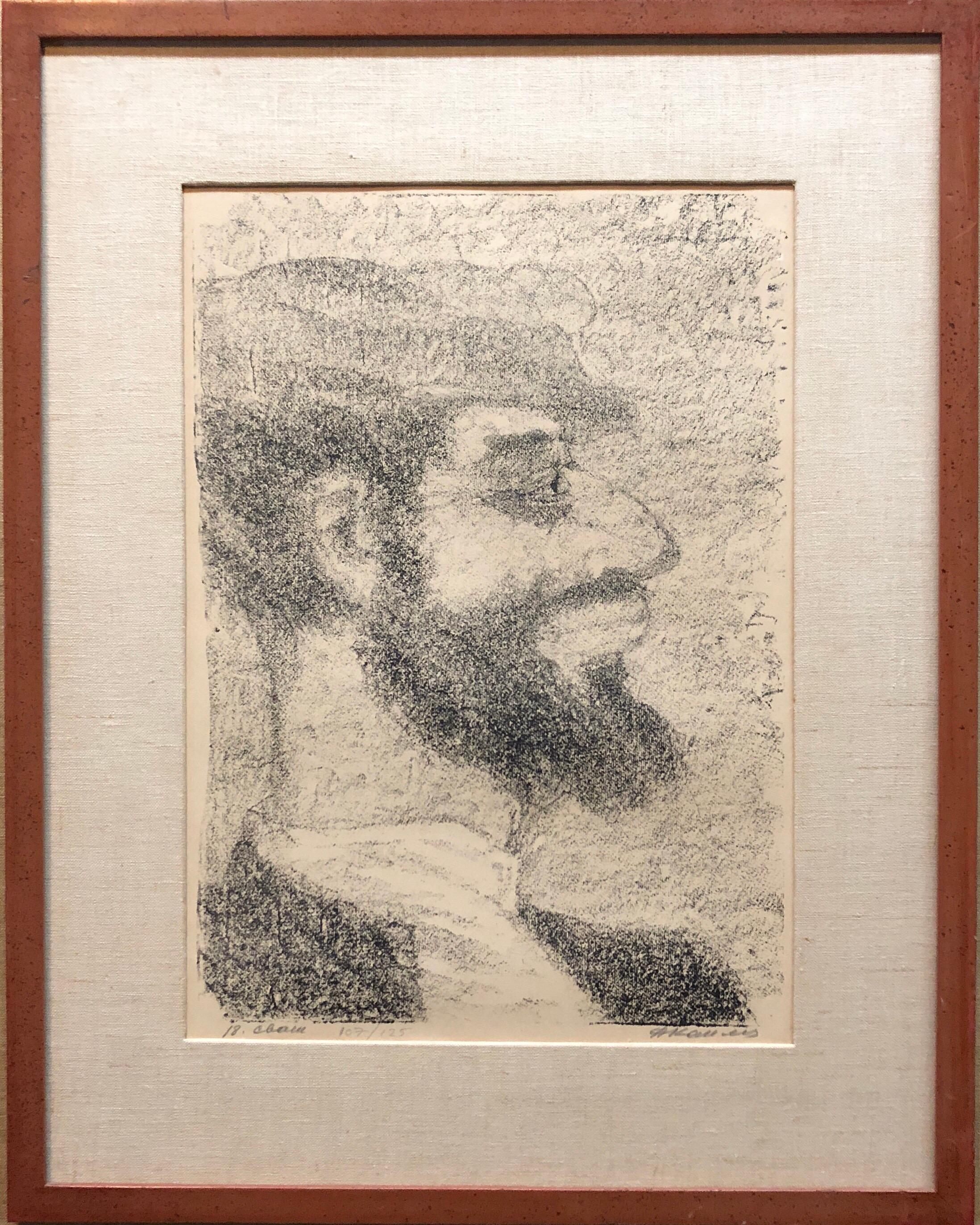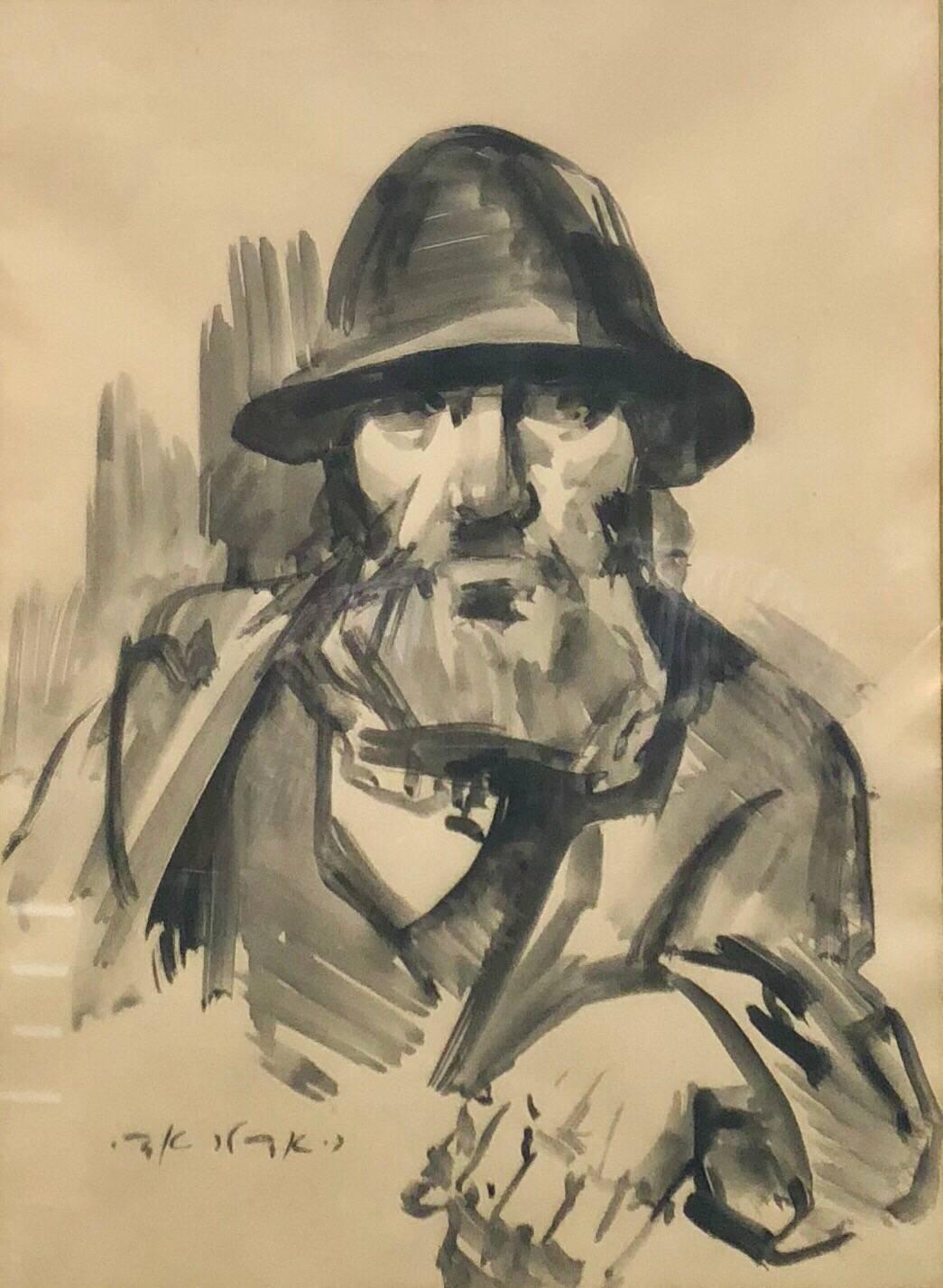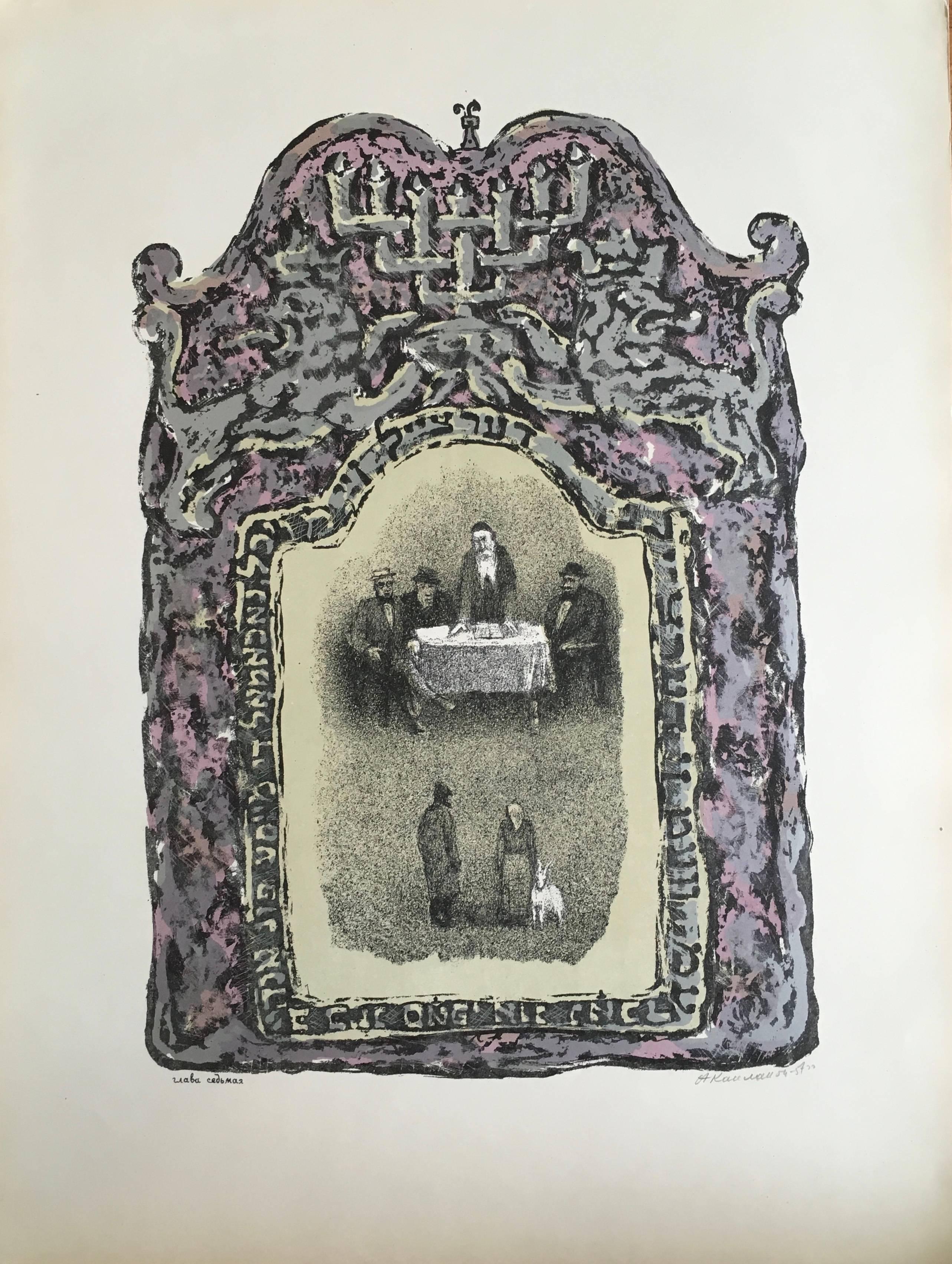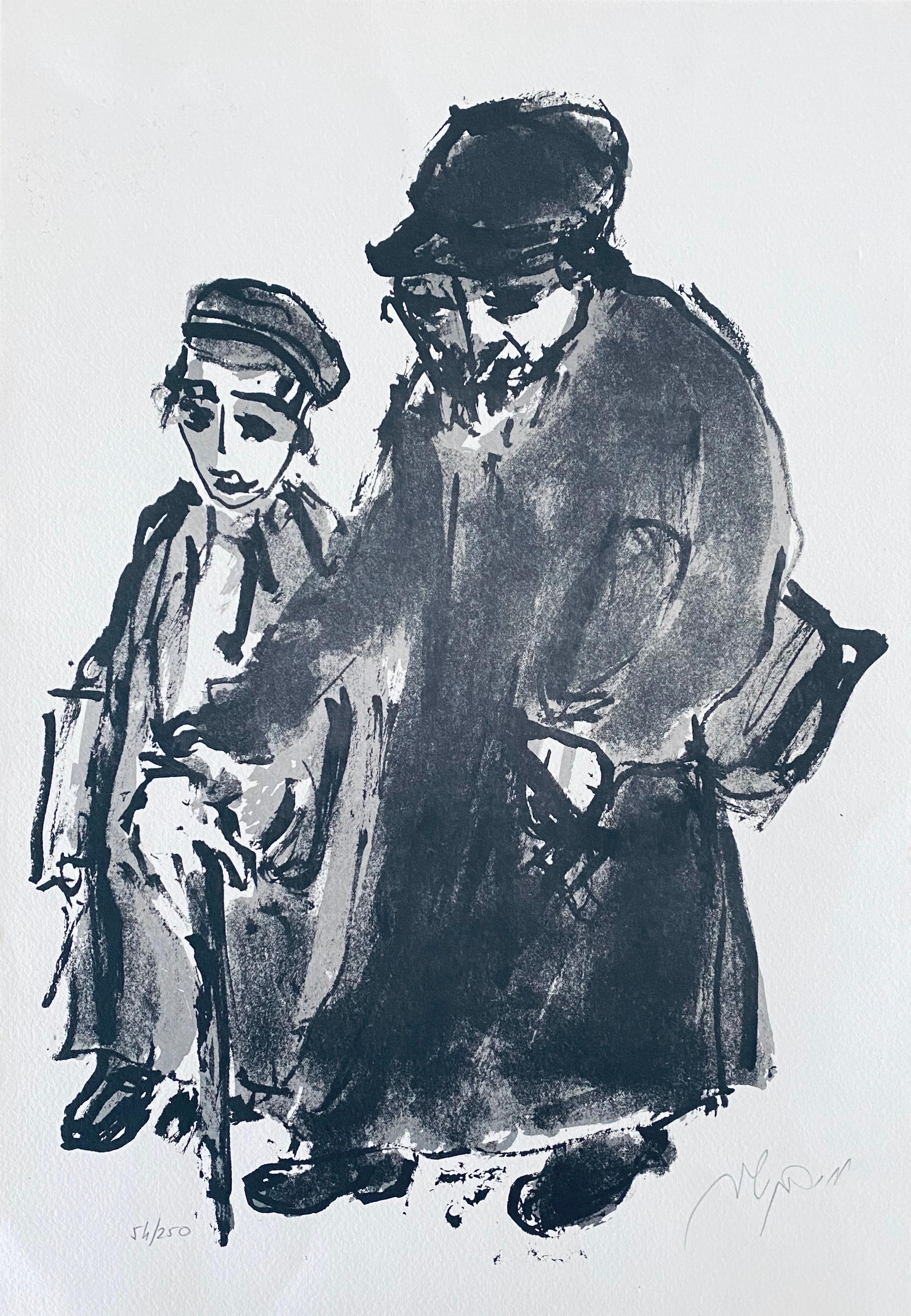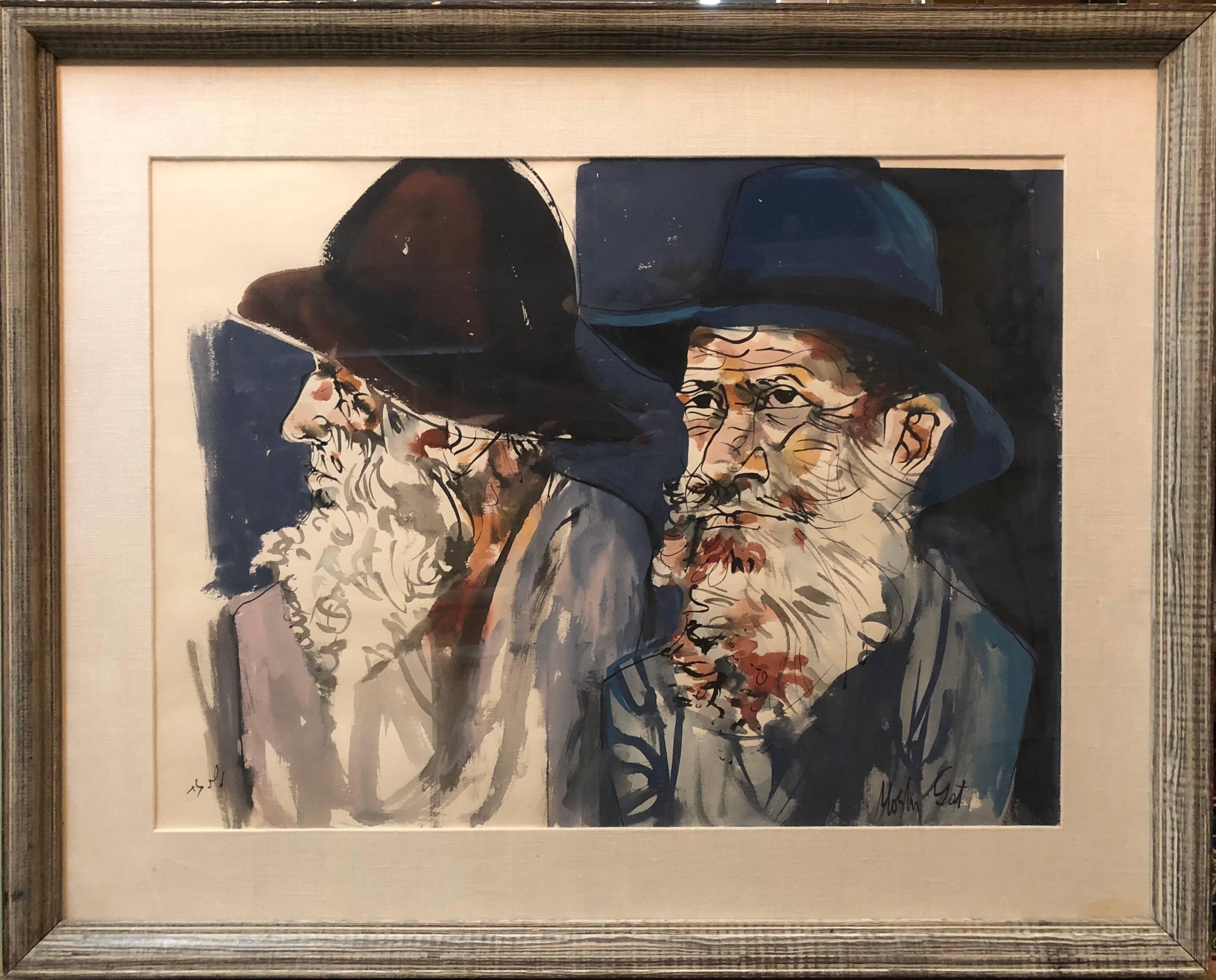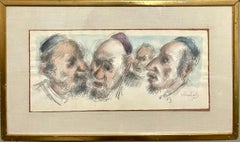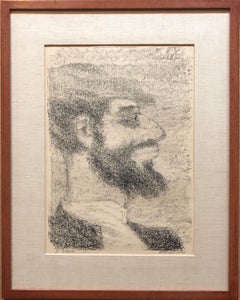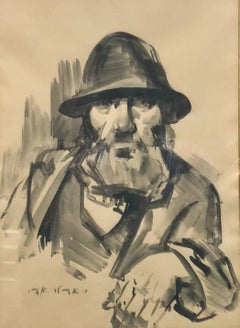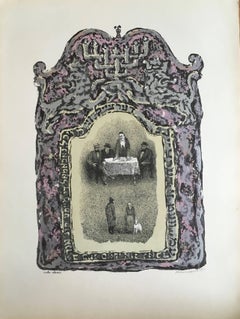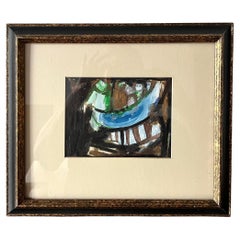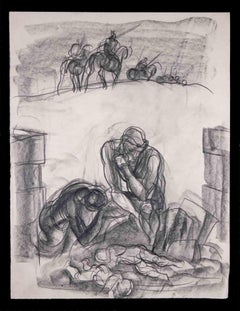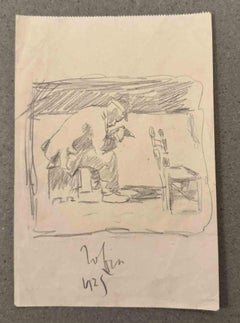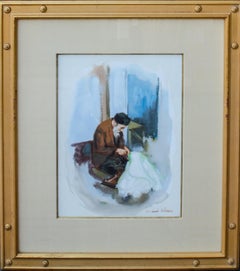Items Similar to RARE WPA ARTIST ISAAC FRIEDLANDER Judaica Drawing 1946
Want more images or videos?
Request additional images or videos from the seller
1 of 6
Isaac FriedlanderRARE WPA ARTIST ISAAC FRIEDLANDER Judaica Drawing 19461946
1946
$850
£644.42
€742.84
CA$1,197.09
A$1,327.48
CHF 697.49
MX$16,219.58
NOK 8,726.60
SEK 8,191.40
DKK 5,545.46
About the Item
Artist: Friedlander, Isaac American (1890-1968)
Isac Friedlander Latvian-born American Printmaker, 1890-1968
was born in Mitau, Latvia. He studied art at the Academy of Rome. He was befriended by the Russian writer Maxim Gorky and began his print career in 1917. In 1929 he emigrated to the United States. A prolific etcher and wood engraver, his work emphasizes the imagery of his native Riga, the urban spectacle of New York during the Depression and the horror of the Holocaust. WPA Artist.
Best known as a printmaker, Friedlander created strong, expressive woodcuts and etchings, often focusing on the human figure at work. His prints include imagery of scenes from his native, rural Latvia and his adopted home, the urban milieu of New York City during the Depression. He was particularly interested in religious subjects, and some of his best-known works contain religious themes, including the Jewish experience, the Holocaust, and African American church services. Friedlander’s prints convey tremendous emotional resonance through his consummate skill with line.
Isac Friedlander lived a volatile and exciting life. Born in Latvia in 1890 to a family of political activists, he was imprisoned by Russian authorities for anti-Czarist activities at the age of 16 in 1906, and remained in jail until 1912. After his release, Friedlander studied art in Rome, where the Russian writer Maxim Gorky befriended him. He began concentrating on printmaking in 1915. In 1917, Friedlander was repatriated to Russia, where, during the first heady days of the Russian Revolution and the subsequent short-lived liberal Kerensky regime, he became an arts commissar in the fledgling Soviet republic. However, he became increasingly disillusioned with Soviet realities. Friedlander eventually immigrated to the US in 1929 with the encouragement and help of his cousin, Joseph Hirshhorn. Friedlander married a former artists’ model and settled in New York, where he remained for the rest of his life. A touching portrait of Isac Friedlander and his wife, Gilda, can be seen in the foreground of the print “Coney Island.” Financially, in spite of the many accolades that he won throughout his long career, including prizes from the prestigious Print Club of Philadelphia, the Friedlanders struggled. Patrons like Dr. Munster, a close family friend, and Joseph Hirshhorn, helped keep the family afloat. In the late 1950s, Friedlander befriended a young artist and friend of his daughter, Joseph Gianguzzi, who kindly lent additional works from his extensive Friedlander collection to this exhibition.
"A prolific etcher and wood engraver, Isac Friedlander came to the United States in 1929. Friedlander's work emphasizes the imagery of his native Riga, the urban spectacle of New York during the Depression, and the sufferings of his fellow Jews in the Holocaust. Biographical notes: Born April 22, 1890 in Mitau, Latvia. Arrested and imprisoned by Russian authorities for anti-Czarist political activities, 1906-12. Studied art at the Academy of Rome, Italy; befriended by Russian writer Maxim Gorky, 1913-17. Began printing career, 1915. Repatriated to Russia during the Kerensky regime, 1917. Emigrated to the U.S. with the encouragement of cousin Joseph Hirshhorn, 1929. Designed dustjacket for Black Manhattan by James Weldon Johnson, 1930. Awarded first prize for the print 'Revival' at the 8th Annual Print Club of Philadelphia Exhibition, 1934. Awarded first prize for the print 'Spiritual' at the 17th Annual Print Club of Philadelphia Exhibition, 1943. Selected as outstanding etcher in the Britannica Book of the Year, 1947. Awarded the Lilienthal Purchase Prize by the California Society of Etchers for 'Ecclesiastes,' 1960. Died August 23, 1968 in New York City.
- Creator:Isaac Friedlander (1890-1968, American)
- Creation Year:1946
- Dimensions:Height: 9 in (22.86 cm)Width: 7 in (17.78 cm)Depth: 1.5 in (3.81 cm)
- Medium:
- Movement & Style:
- Period:
- Condition:
- Gallery Location:Surfside, FL
- Reference Number:1stDibs: LU38211158262
About the Seller
4.9
Platinum Seller
Premium sellers with a 4.7+ rating and 24-hour response times
Established in 1995
1stDibs seller since 2014
1,801 sales on 1stDibs
Typical response time: <1 hour
- ShippingRetrieving quote...Shipping from: Surfside, FL
- Return Policy
Authenticity Guarantee
In the unlikely event there’s an issue with an item’s authenticity, contact us within 1 year for a full refund. DetailsMoney-Back Guarantee
If your item is not as described, is damaged in transit, or does not arrive, contact us within 7 days for a full refund. Details24-Hour Cancellation
You have a 24-hour grace period in which to reconsider your purchase, with no questions asked.Vetted Professional Sellers
Our world-class sellers must adhere to strict standards for service and quality, maintaining the integrity of our listings.Price-Match Guarantee
If you find that a seller listed the same item for a lower price elsewhere, we’ll match it.Trusted Global Delivery
Our best-in-class carrier network provides specialized shipping options worldwide, including custom delivery.More From This Seller
View AllChaim Gross Mid Century Mod Judaica Jewish Watercolor Painting Rabbis WPA Artist
By Chaim Gross
Located in Surfside, FL
Chaim Gross (American, 1904-1991)
Watercolor painting
Rabbinical Talmudic Discussion
Hand signed
17 x 29 framed, paper 10 x 22
Chaim Gross (March 17, 1904 – May 5, 1991) was an ...
Category
Mid-20th Century American Modern Figurative Drawings and Watercolors
Materials
Paper, Watercolor
Vintage Russian Shtetl, Scene Judaica Lithograph Jewish Portrait
By Anatoli Lvovich Kaplan
Located in Surfside, FL
Pencil signed and dated, Judaica Lithograph.
Anatoli Lwowitch Kaplan was a Russian painter, sculptor and printmaker, whose works often reflect his Jewish origins.
His father was a b...
Category
Mid-20th Century Modern More Prints
Materials
Lithograph
Israeli Judaica Rabbi Expressionist Gouachel Painting
By Adolf Adler
Located in Surfside, FL
size includes frame
Adolf Adler 1917 - 1996
Adolf Adi Adler was born in Romania in 1917. Attended the Art College of Kluj Romania in 1950. (in Satu Mare, original home city of the Satmar Hasidic group). In 1963, Adler was chief among a group of well known artists who immigrated to Israel. He was awarded the Nordau prize in 1978. He works have been auctioned at Sloan's Auction House in Maryland and Karrenbauer Auction House in Germany and today are represented in the Yad Vashem Holocaust Museum in Jerusalem. In 1984, a retrospective of his work was held in Rishon Le Zion. He died in 1996.
Awards and Prizes
1993 Mordecai Ish-Shalom Prize, Artists House...
Category
Mid-20th Century Expressionist Figurative Paintings
Materials
Paper, Gouache
VIntage Russian Shtetl Scene, Judaica Lithograph
By Anatoli Lvovich Kaplan
Located in Surfside, FL
Pencil signed and dated, colored Judaica Lithograph.
Anatoli Lwowitch Kaplan was a Russian painter, sculptor and printmaker, whose works often reflect his Jewish origins.
His father...
Category
Mid-20th Century Modern More Prints
Materials
Lithograph
Polish Israeli Artist Expressionist Hand Signed Lithograph
By Moshe Bernstein
Located in Surfside, FL
Born in Poland in 1920, Bernstein completed his art studies in the Academy of Vilna in 1939. His family was wiped out in the Holocaust, but he survived the war and lived in Russia un...
Category
Mid-20th Century Expressionist Prints and Multiples
Materials
Lithograph
Large Watercolor Painting Israeli Modernist Judaica Two Rabbis
By Moshe Gat
Located in Surfside, FL
A large watercolor painting.
Moshe Gat was born in Haifa in 1935.
in 1952 he began his studies at the Bezalel School, in Jerusalem.
In 1955...
Category
Mid-20th Century Expressionist Figurative Drawings and Watercolors
Materials
Paper, Watercolor
You May Also Like
David Meshulam Framed Work on Paper
By David Meshulam
Located in Chicago, IL
Work on paper by Bulgarian artist David Meshulam. Professionally framed with an off-white matte. The piece depicts 4 or 5 standing figures holding a long blue object. In shades of bl...
Category
Mid-20th Century European Mid-Century Modern Paintings
Materials
Paint, Paper
Sketches of People - Original Drawing by Unknown - Mid 20th Century
Located in Roma, IT
Sketches of People is an Original Pencil Drawing realized by an Unknown artist in mid-20th Century.
Good condition on a yellowed paper.
No signature.
Category
Mid-20th Century Modern Figurative Drawings and Watercolors
Materials
Pencil
$267 Sale Price
25% Off
Drawing - Drawing by Mino Maccari - Mid-20th Century
By Mino Maccari
Located in Roma, IT
Drawing is a pencil drawing realized by Mino Maccari (1924-1989) in the Mid-20th Century.
Hand-signed.
Good conditions with slight foxing.
Mino Maccari (Siena, 1924-Rome, June 16...
Category
Mid-20th Century Modern Figurative Drawings and Watercolors
Materials
Paper, Pencil
Sandu Liberman Watercolor of a Craftsman
By Sandu Liberman
Located in New York, NY
Sandu Liberman (1923-1977)
Untitled, c. mid-20th century
Watercolor on paper
Sight: 13 3/4 x 9 3/4 in.
Framed: 22 1/2 x 19 3/4 x 3/4 in.
Signed lower right: Sandu Liberman
Sandu Lib...
Category
Mid-20th Century Modern Portrait Paintings
Materials
Paper, Watercolor
Midcentury Pen Drawing on Paper, France, 1950
Located in Madrid, ES
"Dans la rue à ville" painting. France, 1955.
Category
Vintage 1950s French Mid-Century Modern Paintings
Materials
Paper
Ink Drawing by Storm P. (Robert Storm Petersen), Signed and Framed
Located in Kastrup, DK
This original ink drawing is the work of Robert Storm Petersen, widely known as Storm P., one of Denmark’s most beloved cultural figures. A master of satire and everyday humor, Storm...
Category
Mid-20th Century Danish Modern Drawings
Materials
Glass, Wood, Paper
More Ways To Browse
Judaica Artist
Wpa Artists
Coney Island Vintage
Isac Friedlander
Bear Drawing
Costume Sketch
Sketch Woman
1960 Graphite Painting
Antique Pens And Pencils
Watercolors By Unknown Artists
Laura Ashley Painting
Watercolor Car
Vintage Face Drawing
Erotic Indian Art
Erte Gouache
Berman Eugene
Paul Chalk
Vintage Grocery Sign
